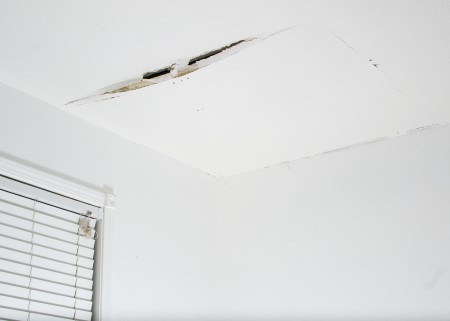Do's & Don'ts of Water Restoration.
Do's & Don'ts of Water Restoration.
Blog Article
Are you interested in details concerning How To Prevent Fire And Water From Ruining Your Holiday Season?

Water provides life, water intrusion on components where it's not meant to be can result in damages. If the water soaks right into your structure, it can peel off away surface areas and erode the structure. Mold as well as mildew also thrive in a wet setting, which can be unsafe for your wellness. Homes with water damages odor old as well as mildewy.
Water can come from several sources such as hurricanes, floodings, burst pipelines, leakages, as well as drain concerns. In case you experience water damages, it would be excellent to understand some security precautions. Here are a couple of standards on exactly how to take care of water damage.
Do Prioritize House Insurance Policy Insurance Coverage
Water damages from flooding as a result of heavy winds is seasonal. However, you can additionally experience an unexpected flood when a faulty pipe all of a sudden bursts right into your home. It would certainly be best to have residence insurance policy that covers both disasters such as all-natural catastrophes, as well as emergency situations like busted plumbing.
Do Not Neglect to Turn Off Utilities
In case of a catastrophe, particularly if you live in a flood-prone location, it would certainly be a good idea to turn off the major electrical circuit. This removes power to your entire home, stopping electrical shocks when water can be found in as it is a conductor. Do not forget to turn off the primary water line shutoff. Furniture will move about and also create damage when floodwaters are high. Having the major shutoff shut down protects against more damage.
Do Stay Proactive and also Heed Climate Alerts
Storm floodings can be very unpredictable. Stay prepared as well as positive if there is a background of flooding in your area. If you live near a lake, creek, or river , pay attention to discharge warnings. Secure belongings from the first stage as well as cellar, after that placed them on the greatest feasible level. Doing so lowers possible home damage.
Do Not Ignore the Roofing System
Prior to the climate turns shocking, ensure you have a roof examination. It would certainly be prudent to get this solution every year as it can alleviate complicated concerns. You can avoid rainfall damage if there are no holes and also leaks in your roof covering. Your roofing contractor will additionally care for defective seamless gutters or any other indicators of weakening. This will prevent water from moving down your wall surfaces as well as saturating your ceiling.
Do Take Notice Of Tiny Leakages
A burst pipe doesn't occur overnight. Normally, there are warnings that indicate you have actually compromised pipes in your house. For example, you might discover gurgling paint, peeling wallpaper, water streaks, water stains, or trickling audios behind the walls. Eventually, this pipeline will break. Ideally, you should not await things to rise. Have your plumbing repaired prior to it results in massive damage.
Don't Panic in Case of a Burst Pipe
When it comes to water damage, timing is essential. Therefore, if a pipe bursts in your home, immediately closed off your major water valve to cut off the resource. Call a reputable water damages restoration expert for support.
Water gives life, water invasion on parts where it's not intended to be can result in damage. Houses with water damage smell stuffy and old.
Water damage from flooding fees to hefty winds is seasonal. You may observe gurgling paint, peeling wallpaper, water touches, water stains, or dripping audios behind the walls. When it comes to water damages, timing is vital.
Some Do's & Don't When Dealing with a Water Damage
DO:
Make sure the water source has been eliminated. Contact a plumber if needed. Turn off circuit breakers supplying electricity to wet areas and unplug any electronics that are on wet carpet or surfaces Remove small furniture items Remove as much excess water as possible by mopping or blotting; Use WHITE towels to blot wet carpeting Wipe water from wooden furniture after removing anything on it Remove and prop up wet upholstery cushions for even drying (check for any bleeding) Pin up curtains or furniture skirts if needed Place aluminum foil, saucers or wood blocks between furniture legs and wet carpet Turn on air conditioning for maximum drying in winter and open windows in the summer Open any drawers and cabinets affected for complete drying but do not force them open Remove any valuable art objects or paintings to a safe, dry place Open any suitcases or luggage that may have been affected to dry, preferably in sunlight Hang any fur or leather goods to dry at room temperature Punch small holes in sagging ceilings to relieve trapped water (don't forget to place pans beneath!); however, if the ceiling is sagging extremely low, stay out of the room and we'll take care of it DO NOT:
Leave wet fabrics in place; dry them as soon as possible Leave books, magazines or any other colored items on wet carpets or floor Use your household vacuum to remove water Use TV's or other electronics/appliances while standing on wet carpets or floors; especially not on wet concrete floors Turn on ceiling fixtures if the ceiling is wet Turn your heat up, unless instructed otherwise

As a fervent reader about Preventing Fires and Water Damage In Your Home, I figured sharing that chunk was valuable. Sharing is good. Who knows, you may just be doing someone a favor. I treasure reading our article about 5 Home Safety Tips To Reduce The Risk Of Fire And Water Damage.
Report this page